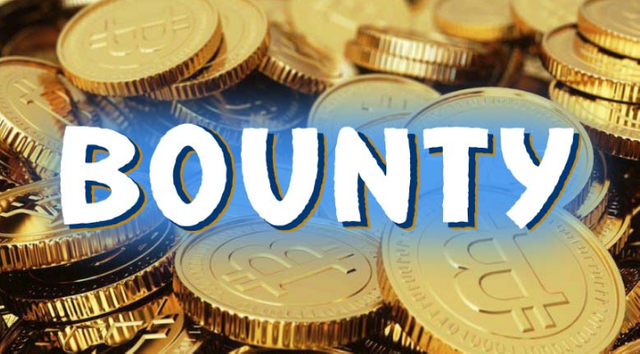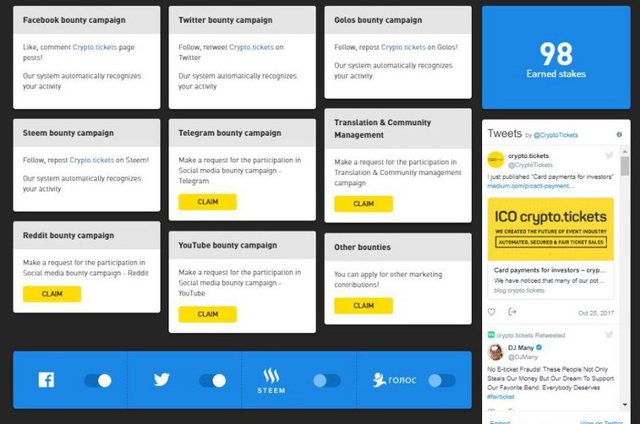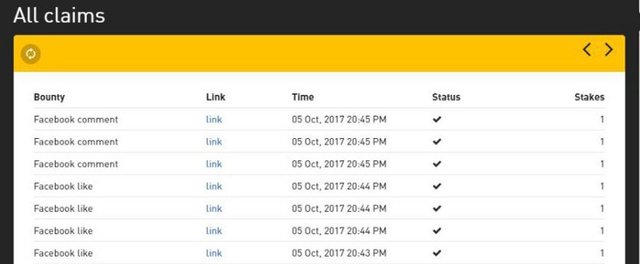How to extend the capabilities of Bounty campaigns and increase the interest of users with the help of bounty platform by Phenom
What is Bounty campaign?
Before we break down the possibilities and details of the “bounty” campaigns in detail, we’d like to revise what this concept is all about.
Bounty is a reward, which in most cases is given to a user in form of crypto currency for performance of a certain type of activity aimed at the promotion and popularization of the project. For example, for activities such as posts about the project on Facebook or posting a review article on the blog. However, payment is not made immediately, but only after the completion of the ICO, and its size moves in lockstep with a number of indicators, ranging from the amount collected to the number of participants in the campaign.

Before going for the ICO, the project announces launch of a bounty campaign, which designates types of activities, as well as bonuses for their performance. In a bounty platform, you can reflect any scenarios for users. If a participant finds the reward attractive, he will be ready to perform high complexity scenarios. Therefore, prioritized activities for the project are always encouraged with higher rates.
Before going for the ICO, the project announces launch of a bounty campaign, which designates types of activities, as well as bonuses for their performance. In a bounty platform, you can reflect any scenarios for users. If a participant finds the reward attractive, he will be ready to perform high complexity scenarios. Therefore, prioritized activities for the project are always encouraged with higher rates.
Types of bounty
In most cases, the bounty campaign allocates approximately 2% of the funds collected during ICO. In each program there are different types of activities, which are grouped according to common characteristics.
The most common types of activities:
- Translations into other languages
- Bitcointalk, subscription and avatar company
- Activity in social networks — posts, reposts, likes, comments
- Channel Modification
- Banners on websites
- Articles and publications in blogs and media
- Reviews, listings on venues and videos on Youtube
- Security and Vulnerability Audit
- Other activities (considered individually)
The program can determine any kinds of activities necessary for the project’ promotion.
During our work we received a wide variety of applications with the request to send tokens for activity. For example, we were approached by a fairly young user, whose sister worked in the company and had possibility to recommend the project to potential customers. For his assistance he asked for a bounty. There were cases when users in search of easy money, having read the rules incorrectly, posted in one day up to 90 identical posts about the project on their Facebook wall and applied for an enormous fee for them! But in any case, even the most unusual and, at first glance, dubious activity can sometimes bring significant benefits to the project, so in the bounty it is always desirable to give users the opportunity to be creative.
Before launching any campaign there is always a challenge to attract the largest number of bounty program participants. But this can be prevented by too complicated methods of registration or uncomfortable forms of sending reports. After all, the user will always strive to get the most number of tokens, spending the least amount of effort.
That’s why in Phenom we have developed our own platform with automated monitoring of user activities.


Our platform automatically tracks activities such as reposts, comments, likes in social networks Golos, Steem, Facebook, Twitter and grants the user with steaks which are later to be exchanged for newly-issued tokens.
Among other important features that facilitate participation of users in the bounty campaign and make it convenient and exciting, one can single out the following:
- A wide selection of bounty campaigns within the user account
- Grants Stakes in real time
- Possibility inside the account to send a report on activities, which will be individually assessed by the bounty manager
- Automatic distribution of tokens upon completion of ICO
These functions allow you to increase the number of participants in the bounty campaign, as well as to attract more attention to the project thanks to a user’s activity.
Calculation of reward
One of the most important aspects of the bounty program is the calculation of the user’s reward. Some projects put a fixed amount of payment for the committed action in tokens. In our opinion, this is not entirely correct, in case the project does not collect the amount sought during the ICO, there may not be enough tokens for all participants of the campaign.
Therefore, the most appropriate solution is to initially grant the user with a certain share of the bounty pool. Its value is not fixed in tokens, but is calculated based on a certain formula at the conclusion of the ICO. The cost is affected by the size of the collected funds, as well as the number of participants in the bounty campaign. Accordingly, the larger the amount of funds attracted by the company is, the higher the cost of share will be. At the same time, the more participants of the program are, the lower the cost of a unit is, since 2% of the total pool of collected funds is distributed among all participants.
With this approach, at the conclusion of the ICO, each user will have a certain amount of shares on his account, and the unit cost will be equal to a certain number of tokens.
In conclusion, we would like to add: if you want users to be genuinely involved in your bounty campaign, try to create the most comfortable conditions for their participation while maintaining a wide range of activities.
Very cool post!
Really so cool...
This is such a helpful, understandable post and has answered many of my questions. Take a look @honeybee11
Thanks @phenom
good